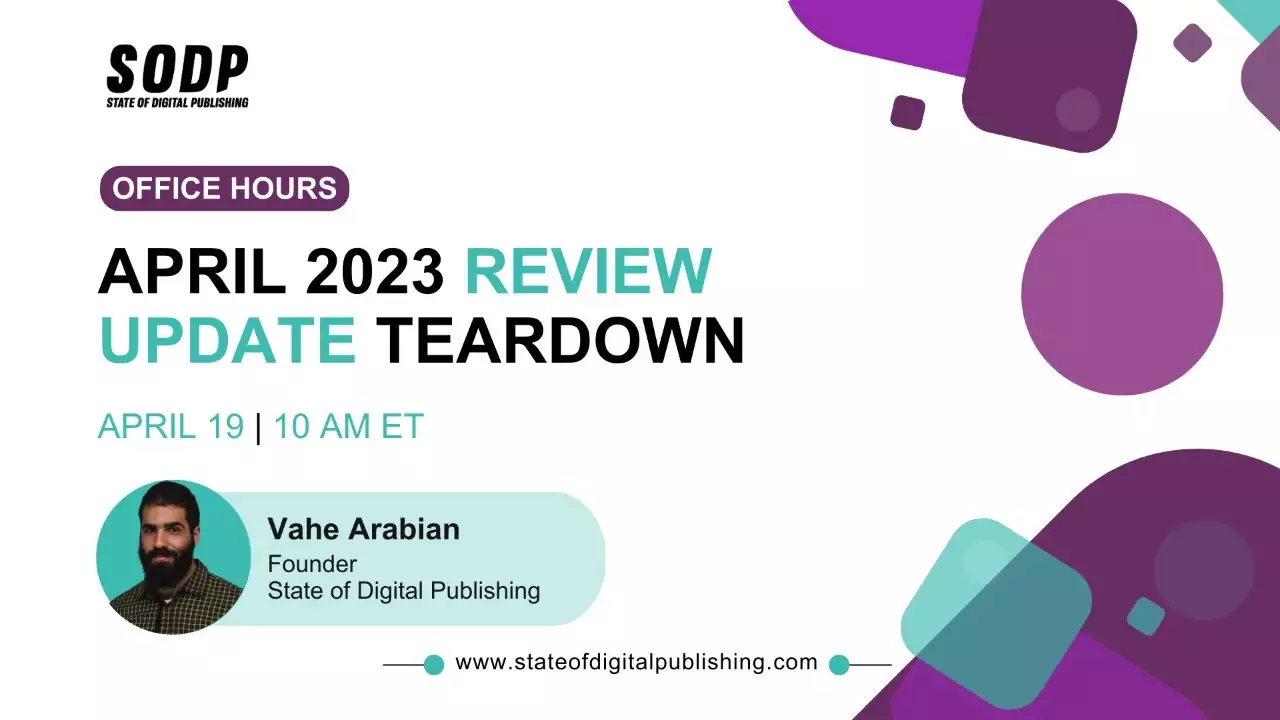In February 2024, State of Digital Publishing (SODP) hosted WP Publisher Success Week – an online event for digital publishing and news media professionals.
This article is based on the summary of key learnings of a presentation by Liam Andrew, Former Chief Product Officer at The Texas Tribune (currently, Technology Lead, Product & AI Studio at American Journalism Project) and Pete Pachal, Founder of The Media Copilot.
The dramatic rise of large language models like ChatGPT and Midjourney has brought AI and automation to the mainstream. Publishers are actively embracing AI tools to increase productivity and cut costs. How is this highly disruptive technology impacting the field of journalism, and what does it mean for the future of journalists?
The Immediate Impact of ChatGPT on Journalism

Liam Andrew
One of the first things they did at Texas Tribune was to develop and publish an AI ethics policy to clarify the limits of what they will do with AI. This is important because most journalists have concerns about the implications of AI for their work and livelihoods.
“We do get a lot of questions from our members, both small and big donors, about making sure that we are not causing harm to journalism with the work we are trying to do with AI.”
With the ethics policy as a base, the Texas Tribune is moving forward in multiple directions of AI experimentation in repurposing, analyzing, summarising, and transcribing content.

Pete Pachal
Most publications including Coindesk tried to go down the content generation path with AI, trying to figure out if the software could actually write articles. But they all quickly came across major limitations, including hallucinations, highly generic content, and lack of necessary specialization.
“Creating articles with AI is kind of like trying to drive in a NASCAR race with an old Volkswagen Beetle or something – the AI is not really equipped to do that. It can sort of do it, but you need to do a lot of things around that particular application to get anything out of that.”
At Coindesk, the team looked at other use cases besides writing articles – tasks like copy editing, adapting and reformatting existing content, and assistance in converting interview transcripts to articles. AI also has the potential to suggest headlines and story ideas, and document research.
Examples of Successful Integration of AI into Journalism

Pete Pachal
In its current state, generative AI can at best produce article content that is earlier than the first draft of a journalistic article. You need a human in the loop. Semafor is a publication that is doing this well right now.
Semafor Signals is an AI tool that looks out on the web in multiple languages on the topic and creates summaries of news stories. A reporter can then take that, put it together, and clean things up. That looks like the future of reblogging or aggregation.

Liam Andrew
The Texas Tribune hosts over 50 public events every year. They want to give insights from these events to their digital audience without forcing them to watch the entire thing. Currently, the team is experimenting with AI-generated transcripts and summaries of these events, for both one-on-one interviews and larger panel discussions that often involve elected officials.
Content from our partners
Ethical Considerations in LLMs, Like Bias, and Diversity

Pete Pachal
A more immediate practical ethical consideration is the potential impact of AI on the economic and labor ecosystems surrounding content creation. The market for stock imagery is the best example. With a $20 subscription, you can get images from Dall-E faster and cheaper.
However, these images are created by diffusion models trained on stock imagery. Now these models are poised to replace the very industry that helped create it and disincentivize people from creating further original content.

Liam Andrew
The Texas Tribune does not create images with AI. They rely on photo teams and contractors to take stock photos. There is a heightened risk of misinformation with AI, either intentional or accidental.
“We feel pretty strongly that there is no excuse for us as a news organization to be generating pixels or images from scratch.”
The Possibilities of Using AI Within Journalistic Workflows
The panelists identified the following examples of AI tools embedded into the workflows of journalists and publishers:
- Reporters using AI as an advanced form of Google Search
- AI tools to generate summaries and first drafts to begin the writing process (for service journalism)
- Training in-house chatbots on media archives for faster archival research/search]
- WordPress plugins to abstract and automate repetitive tasks on websites
The Direction of AI

Liam Andrew
The importance of tone in journalism cannot be overstated. Media organizations have to project a voice of expertise to inspire trust in the audience. That voice is right now missing in LLMs like ChatGPT because they have the wrong tone.
While an LLM may improve in this area, they can never truly replace a human in this field. While journalists will continue to use more AI tools, it is important to highlight that it is humans who are powering news organizations.

Pete Pachal
In the 2010s, you had to be more than just a good journalist or editor. You also needed to be a good content marketer to some extent, to write bespoke content for new platforms like Twitter, Facebook, and SEO for blogs.
Now AI is slowly but surely taking over some of that. Rather than being a content marketer, journalists need to be better product managers and be more product savvy. Understand the best automation systems and tools you can use in your line of work.
“In a future AI-mediated ecosystem, what people get from media and news is going to be much more malleable. That would require a new level of cooperation between content and product side of things.”
Watch the full session:
Download the ebook of learnings from WP Publisher Success Week here.












